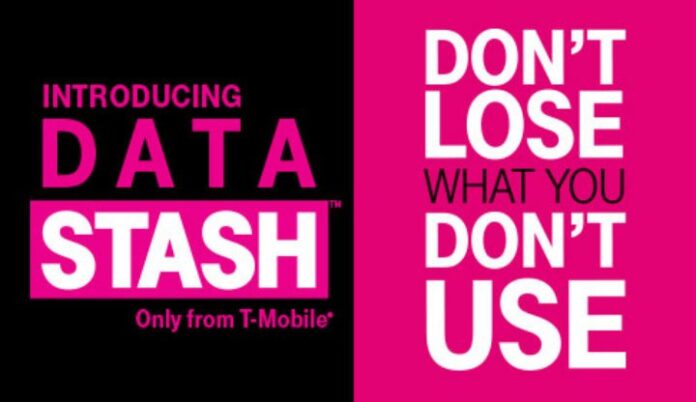Rollover data basis for T-Mobile US latest Data Stash marketing move
T-Mobile US continued to roll out its “Un-carrier” message today, touting a new data offering that takes a cue from the past and enhancements to its LTE network.
The carrier’s “Un-carrier 8.0” announcement centered on its already offered data buckets, but now allows customers who pay extra each month for a larger bucket of high-speed data access to rollover any unused portion.
T-Mobile US said that beginning in January, all customers on eligible Simple Choice plans will be able to keep any portion of data from a bucket that is purchased above and beyond the free data allotment included in their rate plan. T-Mobile US currently provides 1 gigabyte of high-speed data for smartphones and 1.2 GB of data on mobile Internet devices. Customers can purchase a 3 GB bucket of data for their smartphones for $10 per month; 5 GB for $20 per month; or “unlimited” data for $30 per month.
To further incentivize customers, T-Mobile US said it will deposit 10 GB of free data in their data bucket.
“Like every Un-carrier move we make, Data Stash also came from listening to customers,” explained T-Mobile US CEO John Legere in a statement. “This year on Twitter, customers asked the carriers to create a program to roll data forward more than 40,000 times. So this isn’t rocket science. It’s just that we seem to be the only company in this industry that cares enough to listen. That’s fine by me.”
The move would seem to be a good incentive for consumers to purchase a larger data bucket, and in turn help prop up T-Mobile US’ sagging average revenue per user metric. The carrier reported that during its most recent third quarter traditional postpaid ARPU dropped $2.78 year-over-year to $49.84, which the carrier linked to continued adoption of its Simple Choice rate plans that accounted for 84% of accounts at the end of the quarter.
Such “rollover” options have a history in the mobile space, with the former Cingular Wireless one of the first to offer that feature for its voice calling plans back in 2002.
More recently, Verizon Wireless offered a rollover of data access for its prepaid AllSet Plans.
Network enhancements
Outside of its new marketing push, T-Mobile US also updated the progress on bolstering its LTE footprint.
The carrier said it has now rolled out 700 MHz spectrum support in a handful of markets, including Cleveland; Colorado Springs, Colo.; Minneapolis; and Washington, D.C. Customers in those markets will need to have a device compatible with the LTE Band Class 12 to gain access to that spectrum, which T-Mobile US CTO Neville Ray noted in a blog post currently includes the Samsung Galaxy Note 4 and Note Edge, with plans to have all new devices launched in 2015 compatible with that band.
The deployment of sub-1 GHz spectrum is a major step for T-Mobile US as it looks to bolster both its overall footprint and in-building penetration. The carrier has purchased 700 MHz spectrum licenses covering more than 160 million potential customers, and recently raised additional funds that analyst predict will be used to further pack its sub-1 GHz portfolio.
T-Mobile US has attempted to cure the in-building challenges of its spectrum by tapping into Wi-Fi for both voice calling and data needs, which were at the heart of its Un-carrier 7.0 announcement.
“T-Mobile needs to get its 700 MHz deployed as fast as possible – it is great to have Wi-Fi in-home for voice calls, but if you drop signal when you leave your house there is no way you will switch to T-Mobile,” noted Susan Welsh de Grimaldo, director of wireless operator strategies at Strategy Analytics.
T-Mobile US currently relies on its 1.7/2.1 GHz spectrum holdings to support LTE services, with plans to begin refarming its 1.9 GHz spectrum that currently supports 2G and 3G services for LTE beginning next year. The carrier has been increasing its 1.7/2.1 GHz spectrum support under the “wideband LTE” banner, recently announcing the spread of that service to a handful of markets, including New York City, San Diego and Miami.
The carrier noted the additional spectrum support is able to boost network speeds by up to 50% in some markets, with claims of customers in New York witnessing download speeds up to 100 megabits per second. T-Mobile US added that its spectrum-enhanced LTE services are now available in 27 “major markets” or 120 metropolitan statistical areas.
Following its acquisition of MetroPCS last year, T-Mobile US has aggressively refarmed that carrier’s 1.7/2.1 GHz spectrum to support LTE services, which in some markets has allowed T-Mobile US to throw up to 40 megahertz of spectrum behind its LTE service. T-Mobile US has said that all LTE-equipped devices will see a speed increase, with those supporting category-four LTE technology able to tap into the full amount of spectrum and thus the greatest benefit.
The carrier also has lobbied extensively for rules connected to the Federal Communications Commission’s 600 MHz incentive auction, indicating a strong hint it plans to participate in those proceedings.
Ray said T-Mobile US’ LTE network currently covers 260 million pops, matching that of larger rival Sprint, but well behind the more than 300 million pops covered by Verizon Wireless and AT&T Mobility. T-Mobile US was said to be on track to cover 280 million pops by mid-2015, with Ray expecting to have 300 million pops covered by the end of next year.
Bored? Why not follow me on Twitter?

